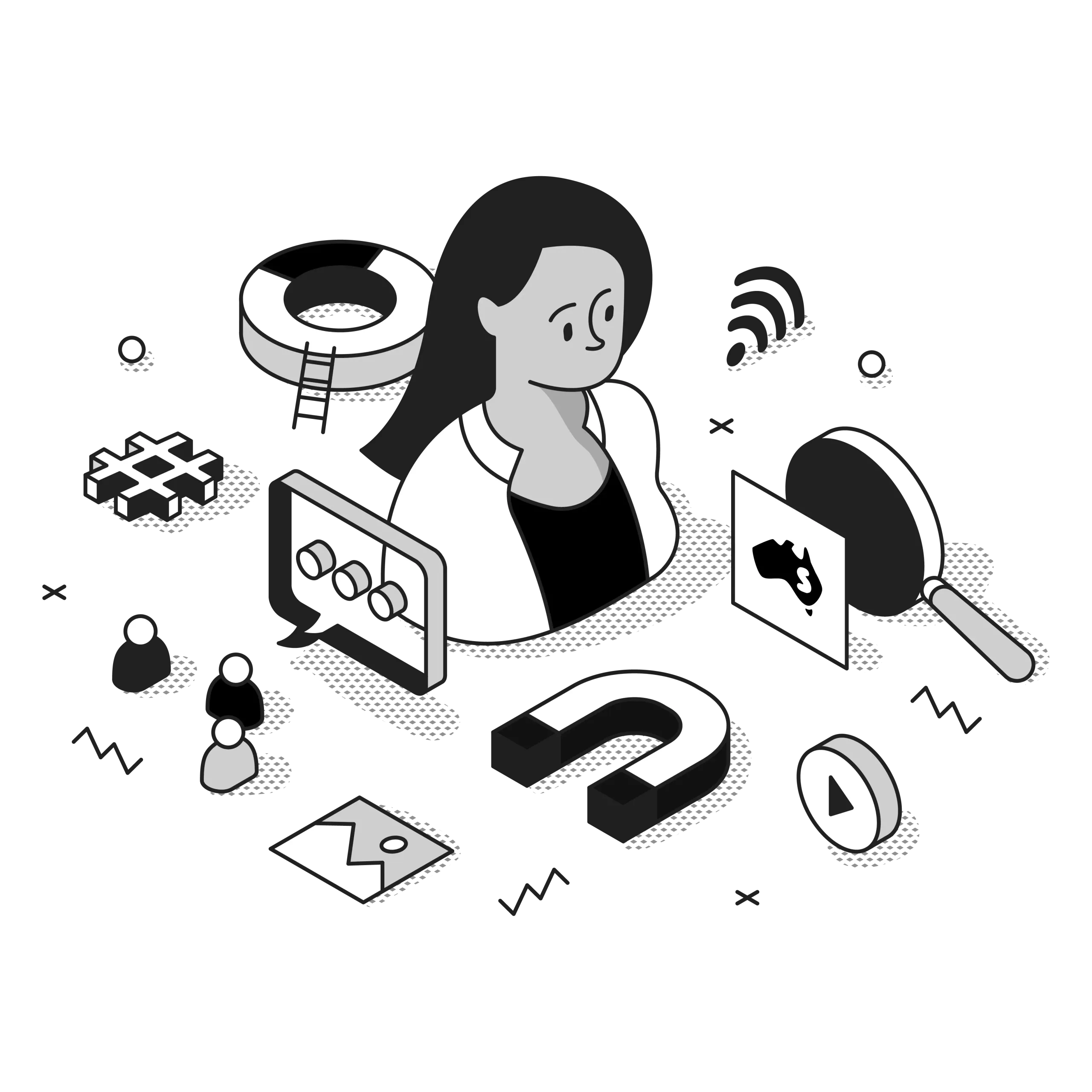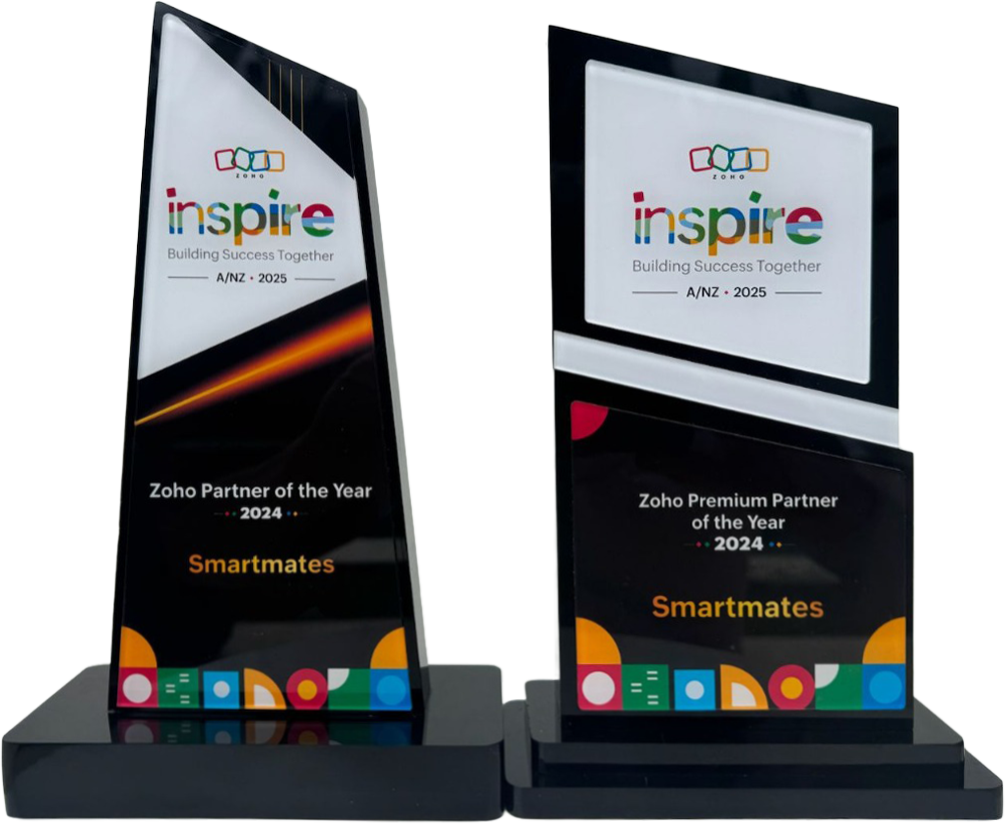Top 8 CRM Challenges Facing Australian Businesses Today

You’ve just bought a new CRM system for thousands of dollars. You think it will change how your business works. Six months later, your sales team still uses spreadsheets. Your customer data sits in three different places.
Sound familiar? You’re not alone.
CRM challenges are a big problem for Australian businesses. Companies from Sydney to Melbourne face the same issues. They find that using a Customer Relationship Management system is harder than they thought.
Australian businesses face special problems. Our markets are different. We have various rules to follow. We also struggle between old ways and new ideas. These things make CRM adoption really tough.
But here’s the good news. When you understand these challenges, you can beat them. We found the eight biggest CRM problems that Australian businesses have today. We also have real solutions that work.
1. Data Silos That Keep Your Information Locked Away
The Challenge:
Data silos are like having a great library where books are locked in different rooms. No one has the right keys. Your sales data lives in one system. Marketing information sits in another place. Customer service records are everywhere else.
This creates big problems. Your sales team can’t see how marketing brought in leads. Customer service can’t find purchase history when people complain. Marketing teams work without knowing what customers really want.
Australian businesses struggle with this a lot. Many companies grow by adding new systems. What seems practical at first becomes a big mess later.
What Happens in Real Life:
Think about this: A client calls your Melbourne office. They ask about a service they wanted three months ago. Your receptionist can’t find the record. It’s hidden in the marketing team’s system. Your sales person has notes about the same client in a different place. What happens? The customer gets frustrated and you lose business.
How to Fix It:
You need to bring everything together. But don’t throw away all your old systems. Start by finding your main data sources. Then create one central place that gets information from these systems.
Modern tools can connect different systems without changing everything. Tools like Zapier can create bridges between your platforms. This lets information flow freely.
Quick Tip: Start with your most important data first. If leads matter most to you, connect your marketing and sales systems first.
2. Team Members Who Don’t Want to Use the New System
The Challenge:
You can bring a horse to water, but you can’t make it drink. The same goes for CRM systems. You can buy the best system, but you can’t force your team to love it.
People resist change. Your team has ways of working they like. They have tools they know well. They feel comfortable with what they do now. Asking them to stop using Excel feels like learning a new language while juggling fire.
Australian workers like things that are practical and work well. If the new system doesn’t prove its worth quickly, your team will go back to old habits.
Why People Say No to Change:
People resist change for three main reasons:
- They fear what they don’t know
- They worry about looking bad at their job
- They like their current methods
Your best sales people might worry that a new system will show their informal ways of working. They might think it will make them slower at first.
How to Fix It:
Success comes from changing gradually, not just putting in new software. Start by asking your team to help choose the system. When people help make decisions, they support them more.
Find champions in each department. These are people others look up to. Train these champions well. Let them become your helpers inside the company.
Make the change slow. Don’t switch everything at once. Start with simple features that help right away. Then slowly add more complex parts.
Also Read: Get the Most Out of Zoho CRM with Expert Training
3. Technical Problems When Connecting Different Systems
The Challenge:
Your business uses many different systems. You have accounting software, email tools, online store systems, and other programs. Your CRM needs to work with all of these. But instead, you get technical problems that make IT people cry.
Connection problems show up in many ways. Data doesn’t sync right. Information gets copied in multiple places. Some systems just won’t talk to each other. You end up with a setup that needs constant fixing.
Australian businesses often have special problems. We have local rules to follow. We use industry software that might not connect well with other systems.
How to Fix It:
Think of connections like city planning. You need a good strategy, not just random connections. Start by mapping how your data moves around. Find the most important connection points.
Choose a CRM that connects well with other systems. Platforms like HubSpot and Zoho have lots of connections available. They have strong ways to connect with most business tools.
Think about using middleware solutions. These act like translators between different systems. They can handle complex data changes and make sure your tools talk to each other reliably.
Pro Tip: Always test connections with small amounts of data first. This helps you find problems before they affect your whole business.
4. Bad Data That Makes People Not Trust the System
The Challenge:
Bad data in means bad results out. This old computer rule perfectly describes the data quality problem Australian businesses face. Your CRM is only as good as the information in it. But keeping data clean and correct feels impossible.
Duplicate records multiply fast. Contact information gets old quickly. People enter data differently, which creates confusion. When your sales team can’t trust the information in your CRM, they quickly go back to their personal notes and spreadsheets.
The Australian market changes fast. Businesses often change locations, contact details, and staff. This makes the data problem even worse.
What Bad Data Costs You:
Bad data isn’t just annoying. It costs money. Studies show businesses lose about 12% of their money because of bad data. For a million-dollar company, that’s $120,000 lost each year.
How to Fix It:
Good data needs both technology and discipline. Set up rules that stop wrong information from getting into your system in the first place. Create standard ways to enter data and train your team to follow them.
Check your data regularly. Schedule monthly reviews to find and clean up duplicate records. Update old information and make data formats the same.
Think about using automated tools that can add missing information and check contact details. These tools can reduce manual work while making data more accurate.
Steps to Take:
- Set up rules for email formats, phone numbers, and postal codes
- Create dropdown menus for common fields to keep things consistent
- Set up duplicate detection that warns users about possible matches
- Plan monthly data cleanup with clear responsibilities
5. Too Much Customisation That Makes Things Too Hard
The Challenge:
Your business is unique. Your CRM should show that. But customisation quickly becomes a problem. What starts as simple field additions becomes complex workflows and complicated rules that would challenge a software engineer.
Many Australian businesses fall into the customisation trap. They think more features mean better results. They add custom fields for every possible data point. They create complex approval processes and build detailed reporting structures. The result is a system so complex that you need a degree to use it well.
Too much customisation creates several problems:
- Makes things more complex
- Costs more to maintain
- Makes updates harder
- Confuses users
Your team needs a tool that makes their work easier, not one that needs lots of training to master.
Finding the Right Balance:
Like finding the perfect temperature, you need customisation that’s just right. Not too little, not too much. The key is finding which customisations really add value versus those that just satisfy preferences.
How to Fix It:
Start with standard features and only customise when there’s a clear business reason. Ask yourself: “Will this customisation save time, make things more accurate, or improve customer experience?” If the answer isn’t clearly yes, leave it standard.
Write down all customisations clearly. This documentation helps when training new users, fixing problems, or planning updates.
Think about long-term effects of customisations. Will they make future upgrades harder? Do they create dependencies that could cause problems later?
Best Practice Framework:
- Must-have customisations: Fields and workflows that directly affect core business processes
- Nice-to-have customisations: Features that improve user experience but aren’t critical
- Avoid these: Customisations that copy existing features or create unnecessary complexity
6. Not Enough Training That Leaves Teams Lost
The Challenge:
You bought a great CRM system, but your team uses only 10% of what it can do. It’s like buying a sports car and only driving in first gear. The problem isn’t the technology. It’s the gap between what your system can do and what your team knows how to do.
Many Australian businesses don’t think about ongoing training needs for CRM success. They provide training when they first set up the system. Then they think their team will naturally learn advanced features over time. This assumption costs money when users create workarounds instead of using built-in features.
The training gap becomes clear when team members leave. Their replacement often gets little training. They learn the system through trial and error or incomplete knowledge from colleagues.
What Happens When Training Falls Short:
Not enough training creates a chain of problems. Users develop bad habits that stick around. They create manual processes for tasks the CRM could handle automatically. Frustration builds as people struggle with features they don’t understand. This leads to giving up on the system.
How to Fix It:
Good CRM training isn’t a one-time event. It’s an ongoing process. Create a structured learning path that introduces features gradually. Let users master basic features before moving to advanced ones.
Develop internal champions who can provide peer support. Often, colleagues can explain features better than outside trainers because they understand your specific business context.
Create a knowledge base with examples from your business. Generic training materials don’t work as well as examples that show your actual workflows and data.
7. Speed and Growth Problems That Hold You Back
The Challenge:
Your CRM worked great when you had 500 contacts and five users. Now you have 50,000 contacts and 50 users. Response times are so slow they make old dial-up internet seem fast. Speed problems turn your efficient business tool into a productivity nightmare.
Growth challenges often surprise Australian businesses. What seemed like a strong system during testing begins showing problems under real-world use. Reports take forever to create. Searches time out. Users start seeing system freezes during busy times.
The problem gets worse as your business grows. More users mean more people using the system at once. More data means slower searches. More connections mean more potential slowdowns. Without proper planning, your CRM becomes a victim of your success.
Warning Signs of Growth Problems:
- Pages take more than 5 seconds to load
- Reports take more than 2 minutes to create
- System timeouts during business hours
- User complaints about system speed
- Less user activity because of speed frustration
How to Fix It:
Address speed problems before they affect user experience. Start by looking at your current usage patterns and finding bottlenecks. Are certain reports really slow? Do specific workflows cause system lag?
Make your data structure better by storing old records separately and removing unnecessary custom fields. Clean up your automation rules to remove redundant processes that use system resources.
Think about your hosting environment. Cloud-based solutions often provide better growth options than on-site installations. But they need proper setup to handle load well.
Plan for growth by choosing CRM platforms with proven ability to scale. Research how the system works with businesses similar to your size and growth path.
Speed Improvement Checklist:
- Regular database maintenance and cleanup
- Review and improve automation rules
- Store old data that’s not actively used
- Watch system performance numbers
- Plan capacity upgrades before reaching limits
8. Hard to Measure Returns That Question Investment Value
The Challenge:
You invested a lot of money, time, and effort in your CRM setup. Now comes the hard question: “What’s our return on investment?” Unfortunately, measuring CRM returns proves harder than calculating returns on traditional investments.
Many Australian businesses struggle to measure CRM benefits because the value often appears in better processes, improved customer relationships, and increased efficiency rather than direct money increases. How do you measure the value of having customer information ready? What’s the money worth of better communication?
This measurement challenge becomes a problem when budget reviews happen. Without clear return metrics, CRM investments look like costs rather than profit makers. This makes it hard to justify continued investment or system upgrades.
Common Return Measurement Mistakes:
- Looking only at direct sales increases
- Ignoring time savings and efficiency gains
- Not setting baseline numbers before starting
- Expecting immediate results without considering adoption time
- Overlooking customer satisfaction improvements
How to Fix It:
Set clear, measurable goals before you start. Define what success looks like for your organisation and create numbers that match those goals. These might include shorter sales cycles, better lead conversion, or higher customer retention.
Track both hard and soft benefits. While money increases are important, don’t ignore efficiency gains, better customer satisfaction, and improved team work. These soft benefits often deliver significant value that’s harder to measure but equally important.
Create regular reporting schedules that track your identified numbers over time. Monthly or quarterly reviews help identify trends and show progressive improvement.
Return Measurement Framework:
| Number Category | Example Measurements | How to Calculate |
| Sales Performance | Conversion rates, deal size | Compare before/after setup |
| Efficiency Gains | Time saved, process automation | Track activity time reduction |
| Customer Satisfaction | Response times, retention rates | Survey data and loss analysis |
| Team Productivity | Activities per user, data accuracy | System usage analytics |
Use stories to communicate returns beyond numbers. Share specific examples of how the CRM helped close deals, solve customer problems, or find new opportunities. These stories make abstract numbers more real and compelling.
Turn Your CRM Challenges Into Business Advantages
Handling CRM challenges isn’t just about solving problems. It’s about changing your business operations to create lasting advantages over competitors. Every challenge we’ve talked about represents a chance to make processes better, improve customer relationships, and drive growth.
The businesses that successfully beat these hurdles don’t just survive. They do really well. They turn data silos into connected information highways. They convert people who resist change into enthusiastic supporters. They turn technical problems into smooth operations that give them advantages over competitors still struggling with spreadsheets and manual processes.
Your CRM journey doesn’t have to be a solo trip through unknown territory. The right expertise can help you handle these challenges more efficiently. You can avoid common mistakes while using proven solutions that work for Australian businesses.
At Smartmates, we’ve helped many Australian companies turn their CRM challenges into success stories. Our certified experts specialise in Zoho and HubSpot setups that actually work in the real world. We understand the unique challenges facing Australian businesses because we’ve solved them before.
Whether you’re dealing with connection nightmares, struggling with user adoption, or trying to make sense of your CRM returns, we’re here to help. Our client-focused approach means we work with your team to create solutions that fit your business. We don’t force your business to fit a standard solution.
Ready to turn your CRM challenges into competitive advantages? Let’s start talking about how we can help your business make operations smoother and speed up growth using proven CRM strategies that work for Australian companies.
The question isn’t whether you’ll face CRM challenges. It’s whether you’ll have the right expertise to beat them efficiently. Your customers are waiting. Your competition is watching. Your growth depends on getting this right.
What’s your next move?
Contact Smartmates today to talk about how our CRM expertise can help change your business operations and drive sustainable growth. Visit smartmates.com.au or call our Australian team to schedule a consultation that could change how you manage customer relationships forever.
Request a Callback from Smartmates

Sarah
I’ll listen to your HubSpot needs to understand your business challenges and goals, ensuring a tailored approach.
I’ll bring our engineer onto our first consultation to explore solutions and clarify your requirements.
We’ll deliver your free project plan quotation, detailing the steps, timeline, and costs—up to this point, it’s completely free!
“My mission is to solve your key problems, build your trust in our capabilities and deliver exceptional value for money.”
